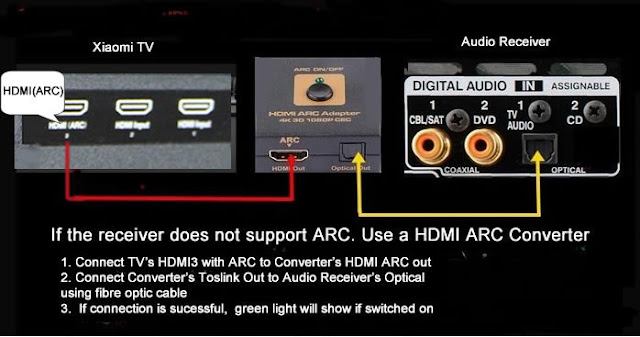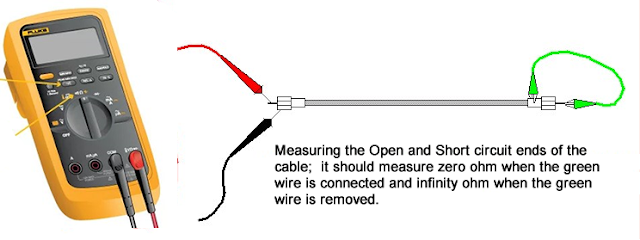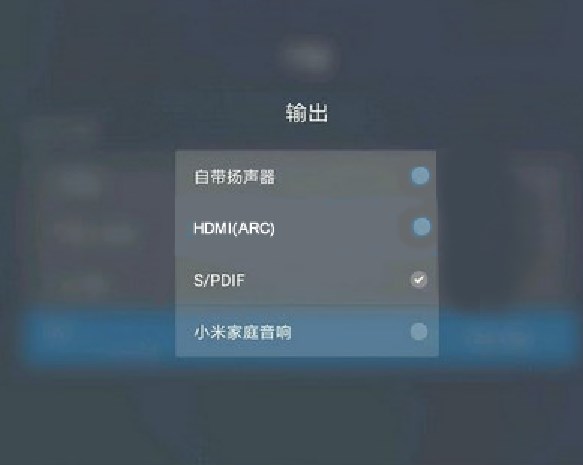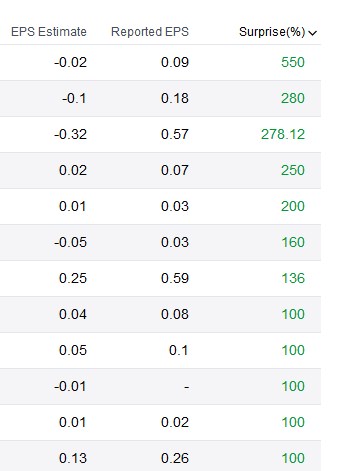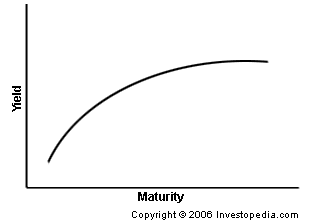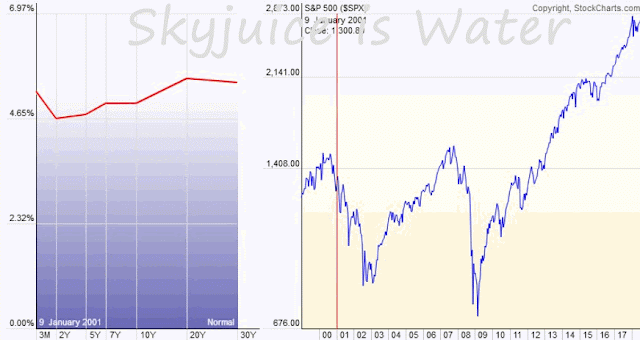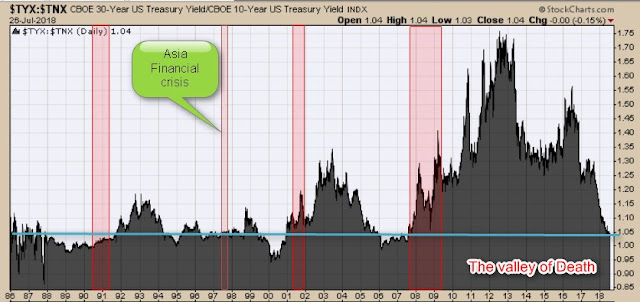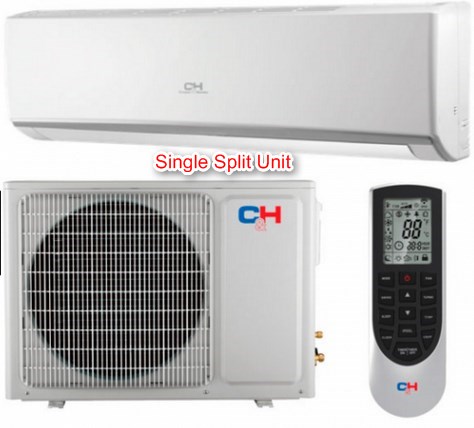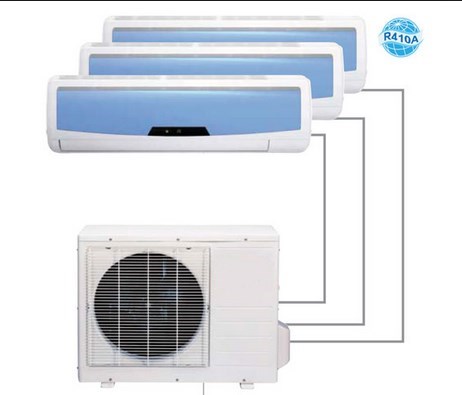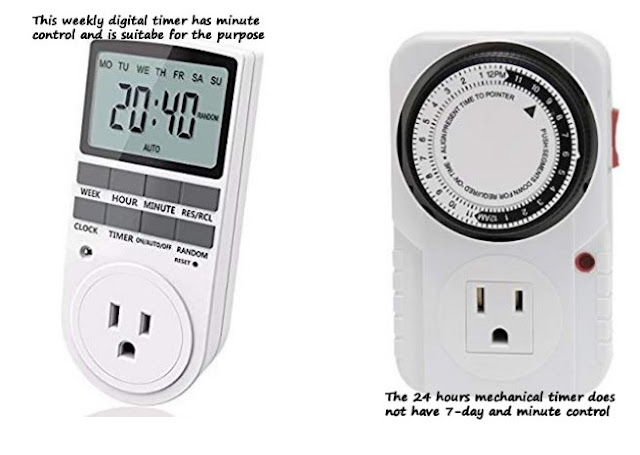28 Sep 2018
2) What if Audio Receivers don't have digital input?3) What if Audio Receiver has only Digital Coaxial Input
4) What if the Receiver only has Toslink Optical connection?
5) What if the Audio Receiver only has Blue Tooth?
6) What if the Audio Receiver only has HDMI (ARC)?
7) How to connect HDMI(ARC), SPDIF and/or BlueTooth?
8) Can We use Ordinary 2 Wire RCA cable as SPDIF cable ?
9) No Sound Output for HDMI ARC Connection
10) Only Stereo Sound Heard
11) What if Everything failed to Work?
back to top
Audio Connection Options for MiTV4
Xiaomi TV4 has no analogue audio output connections e.g RCA A/V connection. It has only a digital Co-axial SPDIF and a HDMI with ARC (Audio Return Channel) for audio connection. It has also a Bluetooth 4.2 connection but not all audio receivers or sound boxes have such advanced facility. This article will discuss the following type of sound connections in Xiaomi TV
b) Direct connection using Co-axial SPDIF cables
c) Use Co-axial SPDIF to optical SPDIF convert
2. Bluetooth
b) Use HDMI ARC to co-axial/optical/RCA converter
back to top 1. Co-axial SPDIF
a) Use Co-axial SPDIF to RCA audio converterb) Direct connection using Co-axial SPDIF cables
c) Use Co-axial SPDIF to optical SPDIF convert
2. Bluetooth
3. HDMI ARC
a) Direct connection using HDMI version 1.4 cableb) Use HDMI ARC to co-axial/optical/RCA converter
What if Audio Receiver does not have HDMI ARC or Digital Inputs ?
These receivers would have only analogue stereo inputs using RCA cable connection or 3.5 mm jacks. As Xiaomi TV4 does not have any analogy outputs, one would need to use audio converter described here (link)
back to top
What if Audio Receiver has only Digital Coaxial Input ?
The connection will be straightforward using a digital audio coaxial cable which looks like ordinary RCA cable but of better quality for digital signal transmission as shown below
back to top
What if the Audio Receiver only has Toslink Optical connection?
a) A HDMI or SPDIF converter would be required. The following shows a setup using TV's HDMI with ARC to connect to the Audio Receiver's Toslink Optical port using a HDMI converter.
b) If audio receiver has HDMI with ARC input, just use a HDMI cable for direct connection to TV’s HDMI3 that has ARC.
back to top
What if the Audio Receiver only has Blue Tooth?
The connection will be straightforward by pairing the Audio Receiver directly to the MiTV using Bluetooth 4.2
back to top
What if the Audio Receiver only has HDMI (ARC)?
What is ARC?
ARC stands for Audio Return Channel. ARC was introduced in 2009 and it is now a standard in most smart TV. The operation will require the use of devices and cabling system that comply with HDMI 1.4 and above. Using ARC, one would not need to have additional audio cable as ARC can use some of the HDMI internal cable for sound transmission. Usually, TV has only one HDMI with ARC and is always labelled accordingly. Connection using non-ARC HDMI outlets will not produce any sound.
Why need HDMI ARC?
SPDIF, whether co-axial or otherwise, supports only up to Dolby 5.1 but does not support Dolby 7.1; only HDMI can support Dolby 7.1. Ordinary audio system and many TV soundbars/receivers that produce simulated surround support only stereo.. However,most Xiaomi TV have only Dolby 5.1 except for 65" Xiaomi TV4. It has an external soundbar that support Dolby Atmos, which is an equivalent to Dolby 7.1.
Connections Using ARC
Not all ARC transmissions are perfect. Having established a proper connection does not mean the system will produce proper sound. It will depend much how the TV can decipher the content providers' signal information and send the correct signal to the audio receiver or video player. Therefore, it is possible that one can only hear stereo sound (2 channels) while playing video contents known to have Dolby 5.1 or 7.1 surround sound.
back to top
How to connect HDMI(ARC), SPDIF and/or BlueTooth?
The sound connection is not plug and play. It requires proper setting up in the TV and the devices such as soundbars and audio receivers a) TV and Receiver Settings for HDMI ARC or SPDIF
To connect up the HDMI ARC or the SPDIF cable for sound output, one would have to activate the control setting on the TV so that the TV will direct the sound output to the respective HDMI or SPDIF output.
4. "小米家庭音响" Using Xiaomi’s Home Sound System connected through coaxial cable
Select 2 if one is using HDMI ARC output
On MiTV4, there are 4 possible settings in the Sound Output Section
1. "自带扬声器" TV’s own speaker system with Stereo (most people use this option)
2. "HDMI(ARC)" Sound connection using HDMI cable through ARC outlet
3. "SPDIF" Sound connection using SPDIF coaxial cable
2.
3. "SPDIF" Sound connection using SPDIF coaxial cable
4. "小米家庭音响" Using Xiaomi’s Home Sound System connected through coaxial cable
Select 2 if one is using HDMI ARC output
If one selected S/PDIF, one would also have to set the decoder to "RAW DATA" so that the sound system will output 5.1 surround sound. If one were to select the decoder to "PCM" as shown, only stereo or two channel sound will be heard.
After that One would also need to consult the manual or seek manufacturer's advice on how to set or activate the control setting of the audio receivers or video players so that they can receive audio signal through ARC or send video signal through the HDMI connection.
b) BlueTooth
Connecting the Bluetooth device is relatively easy. All one has to do is to pair up the devices. To pair up, fire up [Setting] and select [Device and Bluetooth], MiTV will search for available Bluetooth device in the room. If the Bluetooth device does not show up, try turning on the Bluetooth device as it may be switch off by default.
Testing
After having connected up all the cables and done with the setting, one can download the various sound test files available from here for testing
FAQs
FAQs
The SPDIF cable or the Digital Audio Cable used for SPDIF sound transmission is actually a better designed co-axial cable that looks exactly identical to the ordinary 2 wire RCA cable we used to connect up analogue stereos in the olden days. They all have a centre copper wire, braided wire mesh, external PVC shield and a RCA header as shown below
Therefore, they should all give a working audio digital signal although many users claimed the specially designed SPDIF cable is of better quality and hence, providing a better working audio sound.
One can easily test if the cable is faulty just by measuring the the electrical continuity of the cable using a multi-meter.
If there is no sound when SPDIF cable is connected and before starting to complain,
1. Make sure that MiTV's sound output and the audio receiver's sound input is set properly to the correct setting as shown below.
2. Make sure one has plugged the cable in the right RCA socket using only a co-axial cable.
. The co-axial socket is the 2nd one on the right and next to TV aerial socket when one faces the TV.
3. Turn up the volume as high as possible. For some designs, 3/4 of full volume for the TV and the sound bar is not uncommon depending on the signal input and the quality of the cable. For some reasons, the SPDIF output from devices by specification is always lower than the other kind of sound devices
One can easily test if the cable is faulty just by measuring the the electrical continuity of the cable using a multi-meter.
If there is no sound when SPDIF cable is connected and before starting to complain,
1. Make sure that MiTV's sound output and the audio receiver's sound input is set properly to the correct setting as shown below.
2. Make sure one has plugged the cable in the right RCA socket using only a co-axial cable.
. The co-axial socket is the 2nd one on the right and next to TV aerial socket when one faces the TV.
3. Turn up the volume as high as possible. For some designs, 3/4 of full volume for the TV and the sound bar is not uncommon depending on the signal input and the quality of the cable. For some reasons, the SPDIF output from devices by specification is always lower than the other kind of sound devices
 |
back to top
2. No Sound Output for HDMI ARC Connection
Please refer to this link for more information. back to top
3. Why Only Stereo Sound Heard
1. Make sure that the setting in the TV and the Audio receiver have been set correctly to HDMI ARC2. Try some other TV channels to find out if the TV is compatible to receive proper sound signal information from the content provider. Sometimes, the internet transmission might affect the transmission of ARC signals.
3. Refer to this link for more assistance
back to top
4. What if Everything failed to Work?
If everything failed, just connect the audio system using HDMI converter as shown in para 3 or the type as shown below. May be the audio system does not accept the ARC connection.
______________________________________________________________________________
Other relevant articles about Xiaomi TV
Tinyurl :https://tinyurl.com/ycba5gg5
https://tinyurl.com/y99rovda

